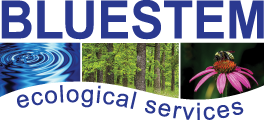 It may look fun, but these bags are costly to fill and costly to empty!
It may look fun, but these bags are costly to fill and costly to empty!
By: Sarah Voska (October 2018)
Dredging is often considered by managers of lakes or ponds filling in with muck, algae, or invasive plants. These issues come as a consequence of nutrient loading in a body of water. Nutrients enter the body of water from runoff, a fallen tree, or a dead fish. As these materials break down, they release carbon dioxide, phosphorus and nitrogen. These all encourage plant and algal growth, and in large enough concentrations, can trigger an algal bloom. Blooms cover large patches of the surface, preventing sunlight from penetrating the water and aquatic plants begin to die, removing a source of oxygen for fish. Bacteria decompose the plant matter, using up remaining stores of oxygen in the water. Low oxygen levels cause fish to die, and they decompose anaerobically, causing terrible smells from the methane & hydrogen sulfide released. Over time, nutrient loading causes a dense growth of plant life and death of animal life from lack of oxygen. The nutrients freed up by the plants and animals that die can cause a second wave of algae production, starting the cycle all over again.
Dredging removes nutrient stores from the bottom of lakes, to remove the fuel for continued algal blooms. It increases the depth of the body of water and usually increases dissolved oxygen levels in the lake, both of which are important for recreational use by fishermen, boaters and swimmers. But dredging is costly and highly regulated. It can cause ecosystem damage, and in some cases, opens up buried nutrients or dormant seeds for new aquatic plant and algae growth- exasperating the issue. You might be able to avoid dredging through watershed planning and shoreline restoration. Watershed management can help to reduce the amount of pollutants entering your lake, and shoreline restoration can prevent erosion as well as filter runoff. Dredging may still be necessary if the stormwater district requires a certain storage capacity of water or your community requires a certain depth for recreational use.
Watershed management starts with finding where the water, and thereby, the nutrients, are entering your lake. Look at all the inputs where water flows into your lake and follow them upstream to find possible point and non-point source pollutants. These may include a large parking lot, construction, or other non-permeable surface. Where water can’t filter into the soil, it runs off, carrying with it lawn chemicals, oil, heavy metals, oxygen-demanding organic matter, or bacteria. Another possible pollutant could be agricultural runoff, containing high levels of nitrogen and phosphorus. By working with the developers or farmers, you can reduce in influx of sediment and nutrients to your lake from outside sources. You can find out if this is a major source of siltation by checking the silt depth close to in-flows. Working with upstream partners in your watershed might be an effective solution, if the silt is deeper at the in-flows than other areas.
If you suspect that nutrients are flowing into the water from local sources, shoreline protection and stormwater control in your community could be the answer. When soil from shorelines erodes into the lake, it adds organic material- causing nutrient loading, and also places the property line literally underwater. Shoreline restoration has a number of benefits, including aesthetic. Shoreline naturalization has been shown to reduce pollutants from entering the water by 40-80%. Besides filtering out runoff pollutants, shoreline native plantings can discourage invasive species like geese and mosquitoes. Native plantings provide habitat for dragonflies, which eat mosquitoes, and the height of the grasses and sedges are too tall for geese to lay their eggs safely. Instead, taller birds like cranes and egret populate native shorelines. Because native plants have deeper root systems than turf grass, they resiliently protect the shoreline from erosion and flood damage. The plants are specially adapted for variable water levels, and will remain green even at the high-water mark. The biodiversity and seasonal colors on display in native habitats can provide a dynamic scenery for residents.
Native shorelines can improve the health of the beautiful lakes at the center of your community. To learn more about using native plants to build, restore, and maintain natural habitats, visit us at BluestemEco.com
Bluestem Ecological Services is a sustainable company that builds, restores and maintains native ecosystems. Our goal is to bring elements of the original Midwest landscape back to its natural state. We develop partnerships based on a balance of people, the environment, and most of all economic value.
